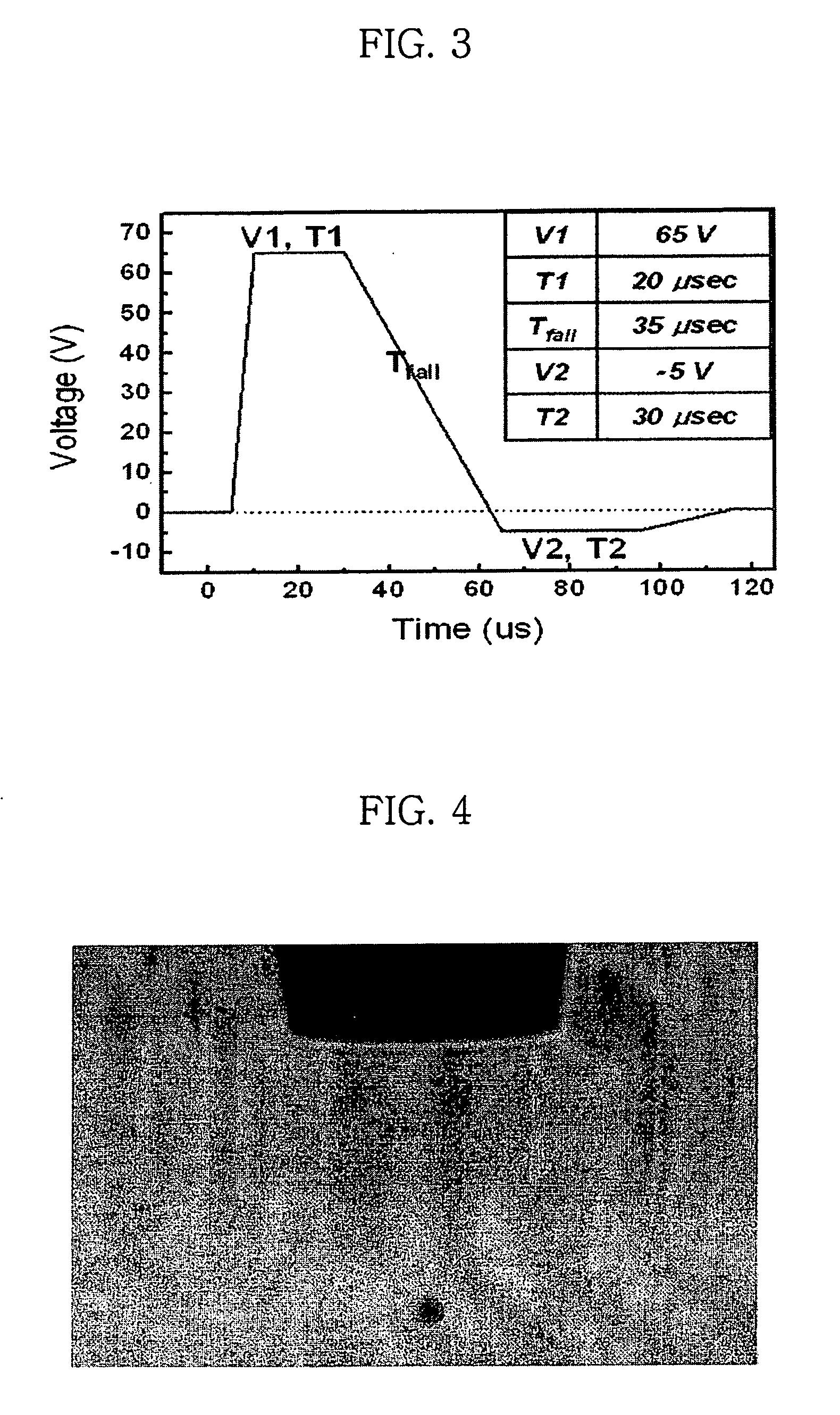Conductive ink composition and method of forming a conductive pattern using the same
a technology of conductive ink and composition, which is applied in the direction of inks, metal/alloy conductors, and conductors, etc., can solve the problems of environmental pollution, limited types of substrates used in optical patterning methods, and increased manufacturing costs so as to improve oxidation stability of conductive patterns, the effect of reducing the manufacturing cost of forming conductive patterns
- Summary
- Abstract
- Description
- Claims
- Application Information
AI Technical Summary
Benefits of technology
Problems solved by technology
Method used
Image
Examples
Embodiment Construction
[0030]The invention is described more fully hereinafter with reference to the accompanying drawings, in which exemplary embodiments of the invention are shown. This invention may, however, be embodied in many different forms and should not be construed as limited to the embodiments set forth herein.
[0031]A conductive ink composition according to an exemplary embodiment of the present invention includes about 15% to about 50% by weight of copper nanoparticles, about 40% to about 80% by weight of a non-aqueous solvent mixture, about 0.01% to about 5% by weight of a dispersion agent and about 1% to about 20% by weight of a wetting agent.
[0032]For example, the non-aqueous solvent mixture may include a first solvent, of which a viscosity is about 0.1 mPa·s to about 5 mPa·s at about 25° C., a second solvent, of which a viscosity is about 15 mPa·s to about 40 mPa·s at about 25° C., and a third solvent, of which a vapor pressure is about 10 mmHg to about 250 mmHg at about 25° C. When the co...
PUM
| Property | Measurement | Unit |
|---|---|---|
| vapor pressure | aaaaa | aaaaa |
| viscosity | aaaaa | aaaaa |
| viscosity | aaaaa | aaaaa |
Abstract
Description
Claims
Application Information
 Login to View More
Login to View More - R&D
- Intellectual Property
- Life Sciences
- Materials
- Tech Scout
- Unparalleled Data Quality
- Higher Quality Content
- 60% Fewer Hallucinations
Browse by: Latest US Patents, China's latest patents, Technical Efficacy Thesaurus, Application Domain, Technology Topic, Popular Technical Reports.
© 2025 PatSnap. All rights reserved.Legal|Privacy policy|Modern Slavery Act Transparency Statement|Sitemap|About US| Contact US: help@patsnap.com



